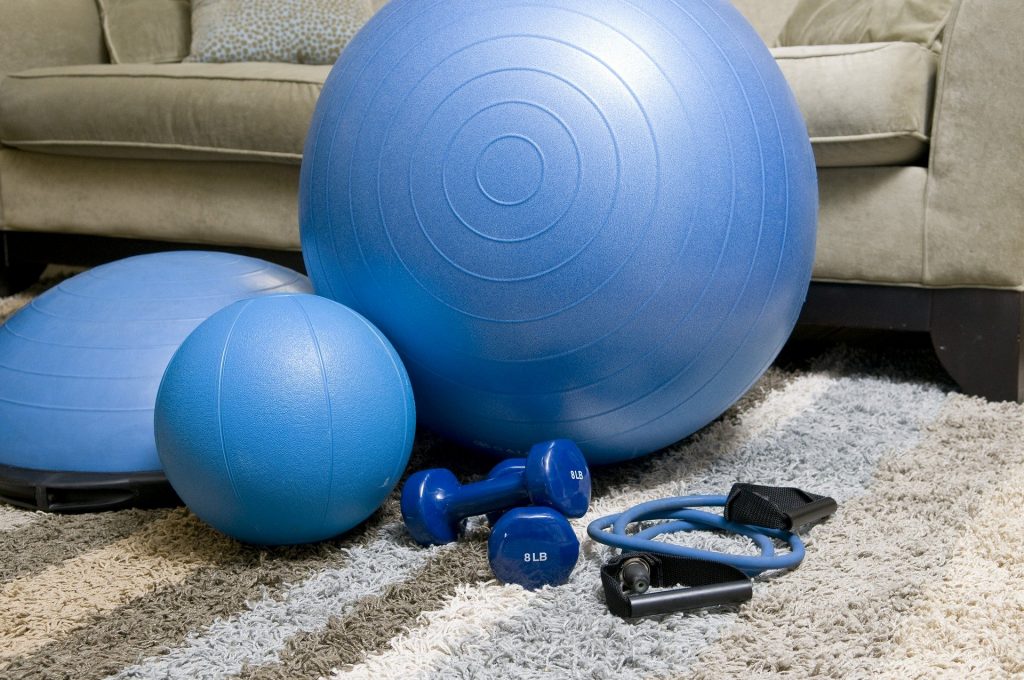
Maintaining physical activity and good health during the pandemic will not only help with weight management, but will also support a healthy immune system and improve mental health as we cope with the ongoing disruption to our lives, says Austin Brooks of the Virginia Cooperative Extension Family Nutrition Program.
“Physical activity guidelines recommend 150 minutes of moderate-intensity physical activity and two full-body strength training sessions each week, yet only about 1 in 5 Americans meet these guidelines,” says Brooks.
Brooks offers the following advice for maintaining physical activity at home.
- Start small and build up your fitness. The benefits are twofold – starting slowly helps you establish a regular habit of activity without overwhelming you and keeps you from getting sore or injured. For complete beginners, 5-10 minutes a day is a great initial goal. For people who have been active off and on, focus on consistency, even if that means dialing back the length per session.
- Use your body. Bodyweight exercises are adaptable for any fitness level and can give you a great workout. Bodyweight exercises can be used for strength training or cardio. There’s no need for equipment or large space to perform at home; all you need is a mat or towel to get started.
- Get creative for cardio. Unless you feel like investing in a stationary bike or treadmill, there are low-cost options for cardio activities outside the gym. Dress appropriately and head outdoors for a walk around the neighborhood, a bike trip on a local trail, or hit your favorite hiking spot. Don’t forget a mask.
Indoors, jumping rope (real or imaginary), jumping jacks and other cardio moves you may remember from P.E. are good options. There are ways to modify for lower impact or lower intensity as needed, such as step taps in place of jumping jacks. If you have a staircase in your home, take a few trips up and down at the fastest speed you can safely manage or quickly step up and down the bottom step.
- Check out online resources for follow-along workouts. There are lots of good workout videos online you can use. Many personal trainers have also shifted to streaming workouts using Zoom or Instagram Live. You can find plenty of options for low or no equipment workouts. Find a reputable source – a certified and respected personal trainer – and try one out.
- DIY equipment for new challenges. If you’re ready to add weight to some of your strength moves, head for the recycling bin. Plastic bottles or jugs (especially with handles) make good home weights. One gallon of water in an old milk jug weighs eight pounds and can be used for bicep curls, bent over rows or goblet squats. Smaller drink bottles or cans of beans are a nice option for lighter weights. While not a DIY option, resistance bands are much more affordable and available than dumbbells or other traditional weights and take up almost no room at home.
- Just like our diets need balance, physical activity routines should include time spent on all the components of fitness: cardio or aerobic activity, strength training, flexibility and balance. This balance helps maximize health benefits and reduce the risk of injury. If you have a strong cardio habit, start incorporating strength training and flexibility or vice versa.
- Fit in fitness throughout the day. It can be hard to find a full 30 minutes every day to devote to physical activity, which is why this is one of the biggest barriers to moving more. It works just as well to break it up into smaller “bite-sized” chunks throughout the day until you hit the 30-minute (or more) mark. It might even be better to approach physical activity this way. When working out at the gym, you probably only want to go once during the day. But if your home is the gym, you can go as many times as you like. Perhaps start the day with 10 minutes of stretching, take a 20-minute walk after lunch and do a 15-minute circuit of strength moves to decompress after work is complete for the day. You have three different types of activity in and are well on your way to meeting the physical activity guidelines for the week.
Austin Brooks is a project associate for the Virginia Cooperative Extension Family Nutrition Program focusing on promoting access and opportunities for physical activity across the state for SNAP-eligible families. Brooks is a registered dietitian nutritionist and a certified personal trainer.



